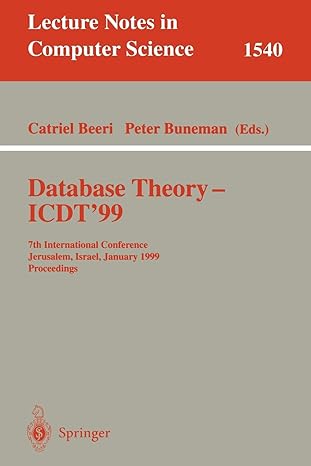Answered step by step
Verified Expert Solution
Question
1 Approved Answer
State whether each of the following is true or false. If false, explain why. a. An algorithm is a procedure for solving a problem in
State whether each of the following is true or false. If false, explain why.
a. An algorithm is a procedure for solving a problem in terms of the actions to execute and the order in which these actions execute.
b. A set of statements contained within a pair of parentheses is called a block.
c. A selection statement specifies that an action is to be repeated while some condition remains true.
d. A nested control statement appears in the body of another control statement.
e. Java provides the arithmetic compound assignment operators +=, -=, *=, /= and %= for abbreviating assignment expressions.
f. The primitive types (boolean, char, byte, short, int, long, float and double) are portable across only Windows platforms.
g. Specifying the order in which statements (actions) execute in a program is called program control.
h. The unary cast operator (double) creates a temporary integer copy of its operand.
i. Instance variables of type boolean are given the value TRue by default.
j. Pseudocode helps a programmer think out a program before attempting to write it in a programming language.
Write four different Java statements that each add 1 to integer variable x.
Step by Step Solution
There are 3 Steps involved in it
Step: 1

Get Instant Access to Expert-Tailored Solutions
See step-by-step solutions with expert insights and AI powered tools for academic success
Step: 2

Step: 3

Ace Your Homework with AI
Get the answers you need in no time with our AI-driven, step-by-step assistance
Get Started


